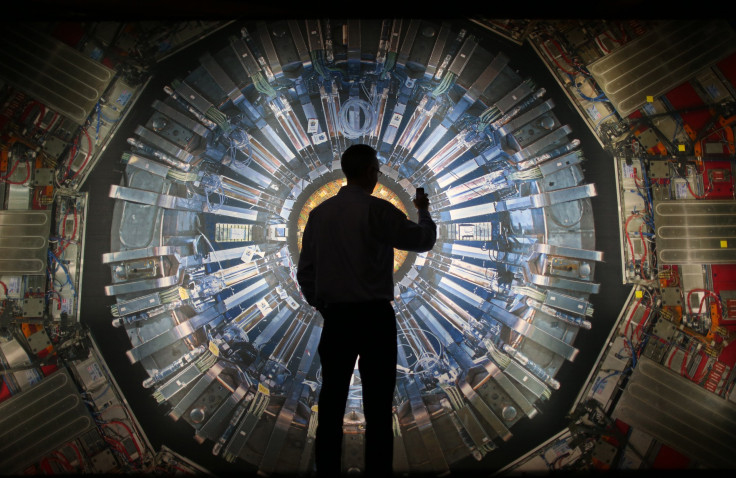CERN LHC Update: 'Bump' In ATLAS, CMS Data May Have Been Caused By More Than One Particle, Researchers Say

Remember the mysterious "bump" in data whose discovery was first announced by researchers at CERN's Large Hadron Collider (LHC) while analyzing the data gathered during its 2015 run? Since then, particle physicists across the world have — in a state of collective frenzy — been trying to explain what may have caused these strange flashes on the ATLAS and CMS detectors at CERN.
The explanations have ranged from the most pessimistic — the bump was nothing more than a statistical fluke — to the most optimistic — it is the telltale sign of a new particle, possibly the much sought after graviton or a heavier cousin of the famous Higgs boson.
Now, in a paper published in the Physical Review Letters, a team of researchers have come up with an alternative hypothesis. According to them, the bump may have been caused by not one particle, but several particles of different masses.
Before we jump into an explanation of this hypothesis, here's a quick recap:
There are four fundamental forces in the universe — the strong nuclear force, the weak nuclear force, the electromagnetic force and the gravitational force. Of these, the first three result from the exchange of force-carrier particles, which belong to a broader group called bosons, and whose interactions — both among themselves and with matter particles such as quarks and leptons — are explained by the Standard Model.
In 2012, with the discovery of the Higgs boson — a particle responsible for imparting mass to all other particles — scientists believed the last missing piece that completed the Standard Model had been found. However, even the completed version of this theory fails to incorporate gravity and explain the origin and preponderance of dark matter and dark energy in the universe.
So, last year, scientists restarted the LHC at an unprecedented energy of 6.5 teraelectronvolts per beam — compared to 4 TeV per beam in 2012 — with the aim of either breaking the Standard Model or bolstering it further. They were also looking for the fabled “graviton” — a hypothetical force-carrying particle for gravity — and evidence of supersymmetry — an extension of the Standard Model that predicts the existence of more massive “super partners” for every known particle.
In December, CERN researchers announced that both the CMS and ATLAS detectors had found, while sifting through the debris of proton-proton collisions, an unexpected excess of pairs of photons carrying around 750 gigaelectronvolts (GeV) of combined energy. The physicists said that this might be a telltale sign of a particle, about six times more massive than the Higgs boson, decaying into two photons of equal mass.
However, their statements were accompanied by a bunch of caveats, which warned that the findings were far from conclusive and may very well turn out to be a statistical fluke or anomaly. The chances of the discovery being a fluke are still higher than the in-3.5-million odds considered the gold standard — the so-called 5-sigma level.
Based on the detections, physicists around the world rushed to offer their ideas that could explain the signal and guide further experimentation during the collider's 2016 run. However, while most hypotheses stuck to the idea of a single particle causing the bump, Kyoungchul Kong and his colleagues from the University of Kansas argued in favor of the existence of a series of particles that decay into photons that are able to "fake" the signal at 750 GeV.
"Every explanation of the 750 GeV excess needs a new particle. Most models assume one around 750 GeV," Kong said in a statement released Thursday. "Everyone was considering a resonance particle, which would have been my first choice. I wanted to interpret this differently ... and proposed non-resonance interpretation."
Although it is still too early to say which hypothesis is correct, and even whether the bump is real, Kong's idea adds to the growing body of explanations put forward to describe the anomaly.
"The lifetime and mass of the particle could reveal something else beyond simply one extra particle, if it turns out to be a real signal,” Kong said. “Yet we do not claim this as a discovery, and we need more data."
© Copyright IBTimes 2025. All rights reserved.






















